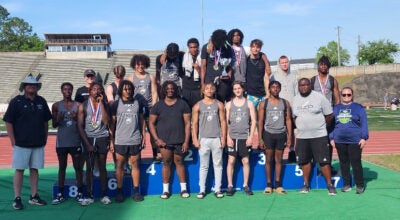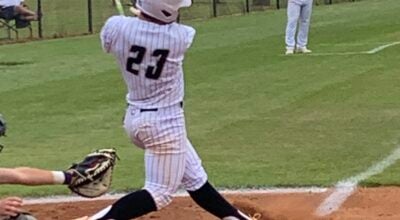Ten things (I think) I have learned about the 2016 NFL season
Published 1:18 am Wednesday, November 23, 2016

- Guest columnist, Joseph Comeau
One of my favorite things about the NFL is watching storylines unfold over the course of a season. Analysts and fans alike approach each new season with expectations and predictions regarding the teams and players that will excel, and those that will falter. The NFL season, however, is no respecter of the predictions of fans or experts. Some predictions are realized, while others fall by the wayside. What remains is a story. The narrative of a given NFL season.
Now that we are deep into the 2016 NFL season, I would like to take the opportunity to discuss some of the things that I have learned about the 2016 NFL season… or at least I think I have learned. The following list includes some of the stories that stand out to me, as I look at the unfolding 2016 NFL season. Please note that the statistics, team records, and other information are based on what had transpired as of the evening of November 20th.
The Panthers really miss Josh Norman.
Since allowing Josh Norman to leave via free agency, the Panthers have struggled to find competent play at cornerback. They cut starter, Bene Benwikere, after four games in the regular season, and their current starting cornerbacks are both rookies. As a result, the Panthers rank 25th in passing yards allowed per game, and 23rd in yards allowed per pass attempt. As bad as those numbers look, the reality is probably even worse. A good pass rush can typically help cover up deficiencies in the secondary. The Panthers have a very good pass rush – they are tied for first in the league with 30 sacks. The paltry pass defense statistics are even more damning when one considers that they are getting so much pressure on the quarterback.
Todd Gurley is not Adrian Peterson.
Adrian Peterson has been a true generational talent at the running back position. The thing about running backs – even very good ones – is that they typically struggle if their team does not have a reasonably competent passing game. If a team cannot pass well, the defense stacks defenders near the line of scrimmage (what is often called stacking defenders in the box). The logic here is obvious: If you aren’t worried that the opponent is capable of passing the ball on you, then you are free to stack defenders in the box and stymie the running game as well. One of the things that has been most impressive about Adrian Peterson throughout his career is that his play has been exceptional, even when the Vikings have not had good passing offenses to keep the defense honest. During his rookie season Todd Gurley flashed this sort of potential, rushing for 1106 yards in only 13 games, with a 4.8 yards per carry average, on a Rams team with a suspect passing game. This year, however, has been quite the disappointment for Gurley. Through week 11, Gurley has yet to rush for 100 yards in a game. In fact, he has only rushed for more than 75 yards on two occasions, and he has averaged a disappointing 3.1 yards per carry. As you might suspect, Gurley’s struggles are partially associated with the fact that the Rams have a poor passing offense. I still believe that Gurley is an elite talent, and that he will have an excellent career – especially if rookie quarterback Jared Goff develops into a competent NFL passer – but he does not, at this point, appear to be the transcendent talent that Peterson has been.
David Johnson is a bad man.
This is not a commentary on his character – by all accounts, Arizona Cardinals running back David Johnson is high-character person. But try telling that to the NFL defenders who have attempted to tackle him in the open field. Full disclosure, I am a long-time Cardinals fan, so perhaps I am biased. At the same time, as a long-time fan I watch every Cardinals game, so I have seen his full body of work this year. One of the things that scouts look for from running backs, is whether they are just gaining the yards that are there (i.e., are they gaining yards that any replacement-level running back could get with the same offensive line play), or are they making people miss and getting more yards than are actually there? David Johnson consistently gains more yards than the offensive line produces for him. It’s not only evident when he eludes defenders and breaks off a long run. It’s also noticeable on one-yard gains that for most other backs would have been three-yard losses. He is big, he is fast, and he is elusive. Quite simply, he is scary-good.
The Cowboys offensive line might be the best position group in the NFL.
I have hated the Cowboys nearly as long as I have loved the Cardinals, so this one pains me to write. A few years back, Jerry Jones actually did something wise and started letting his football people have more influence in making football decisions. This shift is exemplified by the 2014 draft, when instead of making a splash by drafting Johnny Manziel, the Cowboys opted for the smart and utterly non-sensational pick, by drafting guard Zack Martin. In fact, the Cowboys have invested significant draft capital in their offensive line. Left tackle Tyron Smith was the ninth overall pick of the 2011 draft, while center Travis Frederick was selected in the first round of the 2013 draft. The other two starters on the Dallas offensive line, while not first round selections, are solid players in their own right. Right tackle Doug Free was drafted in the fourth round by Dallas in 2007, and has been a solid contributor for years. And to add to this embarrassment of riches, starting left guard La’el Collins was projected to be a first round pick, but went undrafted due to concerns regarding a tragic situation. After Collins had been cleared in the situation, this first-round talent signed with the Cowboys as an undrafted rookie free agent. Altogether, the Cowboys’ investments in the offensive line are paying off with a 9-1 record, behind rookie sensations Ezekiel Elliott and Dak Prescott – both of whom are benefiting greatly from playing behind such a talented offensive line.
Brock Osweiler does not appear to be a franchise quarterback.
What does $72 million get you in today’s NFL? If you’re the Houston Texans, apparently not much. Nine games into his massive contract, Osweiler is ranked 31st in the NFL in quarterback rating – only Blaine Gabbert and Ryan Fitzpatrick are faring worse among qualifying quarterbacks. There is the possibility that Osweiler might develop into a good starting quarterback. He is still young (he turns 26 this month), and when you add up all of the snaps he has taken since Denver drafted him in 2012, he has only played the equivalent of one full season in the NFL (629 attempts). However, I am not overly optimistic about his future in Houston with that onerous contract.
DeAndre Hopkins is not (completely) quarterback-proof.
One does not need to be a football savant to understand how quarterback play is important to the production of wide receivers. If you don’t have a competent quarterback throwing you the ball accurately and on time, it’s hard to consistently make plays as a receiver. For the past few seasons, however, DeAndre Hopkins appeared to be one of those rare receivers whose talent transcends poor quarterback play. In 2015, despite playing with quarterbacks like Brian Hoyer, T.J. Yates, and Brandon Weeden, Hopkins put up elite numbers (111 receptions, 1,521 yards, and 11 touchdowns). Through nine games in 2016, however, Hopkins’ production is down significantly, as he is projected to finish with 80 receptions, 857 yards, and five touchdowns. I still believe that Hopkins is one of the five best receivers in the game, but he does not appear to be as quarterback-proof as I once thought.
Mike Zimmer is a helluva coach.
He loses his starting quarterback and a future Hall of Fame running back to injuries. His offensive line one of the worst in football. He is starting a quarterback whom the Vikings acquired via trade a week before the beginning of the season. Despite these challenges, the Vikings are currently tied with the Lions for the top spot in the NFC North, with a record of 6-4. The Vikings may not hold on to win the division, but Zimmer has shown a remarkable ability to coach a team through adversity. Vikings fans have cause for optimism, regardless of whether the Vikings manage to win the division.
Boy is that Falcons’ offense potent. The defense, not so much.
Matt Ryan is generating MVP buzz. Julio Jones is (once again) a beast. Altogether, the Falcons’ offense is 2nd in yards per game. That’s all great news for Falcons fans. The bad news is that the defense is not nearly as good as the offense. Atlanta is 27th in total yards allowed per game, and is allowing 28.3 points per game, which ranks 28th in the league. If you are looking for a silver lining, there are a few. Atlanta’s pass rush had been anemic for the past few seasons, but the Falcons are currently tied for 10th in the league with 22 sacks. Also, at least some of the defense’s woes are attributable to the fact that opponents are putting up massive yards trying to keep up with Atlanta’s potent offense. Still, if the Falcons want to be serious contenders, they will need to improve their defensive play.
The Jaguars are not ready for prime time.
In 2015, the Jacksonville Jaguars showed signs that they might be ready to emerge from a nearly decade-long spell of insignificance. At 5-11, the record was not great, but the offense put up big numbers behind quarterback Blake Bortles’ 4428 passing yards and 35 passing touchdowns. Many believed that the Jags appeared to be poised for an improved 2016 campaign, though there were some who saw the Jags as fool’s gold. Unfortunately, the fool’s gold camp appears to be correct, as Jacksonville currently stands at a record of 2-8, and the offense has not been nearly as effective as last year. Bortles is looking like a high-volume/low-efficiency quarterback, which does not bode well for the team’s future. Well-liked coach Gus Bradley has survived three poor seasons in Jacksonville. His coaching tenure won’t survive beyond a fourth.
The Raiders, on the other hand, apparently are.
This one pains me about as much as it did to write about the Cowboy’s recent success. It’s hard for me to decide which team I dislike more – the Cowboys or the Raiders. Like the Jaguars, the Raiders were a team many people believed were on the road to relevance. And like Jacksonville, the Raiders were looking to capitalize on an offense that put up big numbers in 2015, behind a young quarterback with a big arm. Unlike the Jags, however, the Raiders have managed to make a big leap forward, and are currently leading the AFC West with a record of 7-2. And, unlike Bortles, Derek Carr appears to be an emerging star whose play has improved from 2015. I do not think the Raiders are quite as good as their record suggests, but they do appear to be headed in the right direction.






